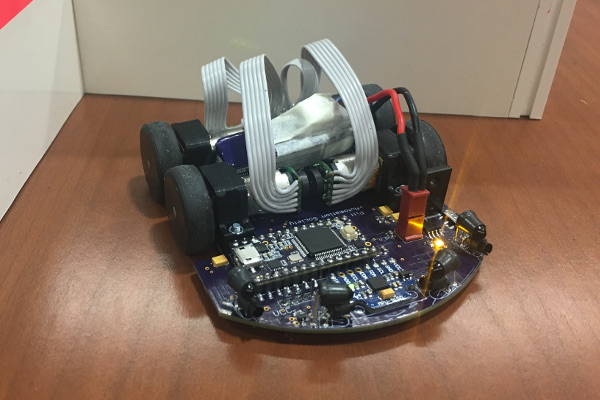News Feed
Newsletter October 2016: Motion Control
Many robotics projects involve controlling a car-like robot to accomplish some task. Examples include last year’s Micromouse (below), Line Follower, and Sumo projects.

While each robot has different characteristics and is destined to accomplish a different goal, one thing is the same. They all have wheels. They all need motion control.
Often times in computer science, we find that many projects have the need to solve a similar problem, yet each project has been developing its own solution. This indicates duplicated or “wasted” effort, because the projects could be sharing code where their tasks overlap.
The goal of the Motion Control project is to study control theory surrounding car-like robots, to identify common elements and concepts surrounding these robots, and then to develop a practically useful library or “toolkit” for a potentially large audience. We want to develop a robust and easy to use strategy...
Newsletter October 2016: Scorpion
The Scorpion is currently in the design phase. We will be finishing up preliminary designs and picking out parts in the next couple of weeks. The end goal of this project is to design and build a scorpion bot that can mimic the natural motions of a real scorpion. In addition we are hoping to be able to interface it with a myo band, so we can control the bot through our hand gestures. In order to make it more of a challenge we have decided to use one of the TI microcontrollers in place of the usual arduino or teensy. In addition to using the TI chip we would like to design a pcb for the chip, so we will be able to remove any unnecessary ports and pins. The code will be written in C and will be mostly firmware and servo control heavy.
Newsletter October 2016: IARC 7
RAS is participating in Mission 7 of the International Aerial Robotics Competition (IARC). IARC has been running since 1991 and centers around the concept of missions which can span multiple years. There have been seven missions in total, with each successive mission pushing the boundaries of aerial robotics. See http://www.aerialroboticscompetition.org for more information.
Mission 7 began in 2014 and has not yet been solved. Teams are required to develop an autonomous aerial robot capable of directing ground robots through physical interaction. More specifically, 10 iRobot Create 2 differential drive robots move around along a randomly generated path inside an arena. The arena consists of 10m by 10m flat area marked with a grid line pattern. The aerial robot can interact with the ground robots by either blocking its path, forcing it to turn around, or by touching a switch on the top of a ground robot, causing it to...



